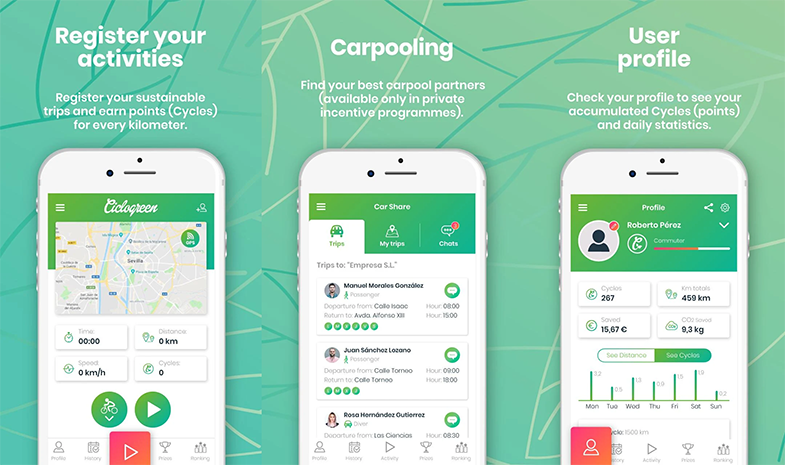We help companies and cities to promote sustainable mobility practices in companies, universities, and city councils in any urban area of the world.
We provide an easy-to-use online reward system (web + app) to promote and analyze sustainable mobility practices in companies, universities, and city councils in any urban area of the world, helping our References/Customers to achieve the objectives of their sustainable mobility plans and get healthier and more productive employees, students and citizens.
Employees register their urban trips on the platform using our tracking app and they stay motivated thanks to gamification elements (ranking, points, Mobility Challenges). Consequently, Ciclogreen supports companies and city councils to achieve the objectives of their Sustainable Mobility Plan as well as creating a healthier workforce by increasing their productivity by 15% and reducing their absenteeism rate by 25% while reducing CO2 emissions. Furthermore, Ciclogreen analyzes accumulated mobility data to give mobility patterns insights to city councils so they can monitor cycling and pedestrians’ infrastructure use and design new ones.
Air pollution kills 7 million people in the world every year. According to the European Commission, congestion in the EU costs annually around 1% of the EU’s GDP (around 100 billion EUR) (European Commission, 2015). Most of the negative external effects appear in the form of health loss of people exposed to transport emissions.
Most employees drive to work, increasing air pollution and suffering from a sedentary lifestyle. Those passive commuters are less productive and show a higher absenteeism rate than employees who cycle to work. European companies lose 102 billion euros per year due to absenteeism (calculation based on the number from Eurofound).
Companies are implementing sustainable mobility plans, but they are not able to increase the number of employees cycling and walking to work using only mobility surveys and communication campaigns. Some companies are implementing incentives to encourage their employees to be active commuters, but lack a tool to measure changes in employees’ mobility habits.
Companies, universities and city councils
